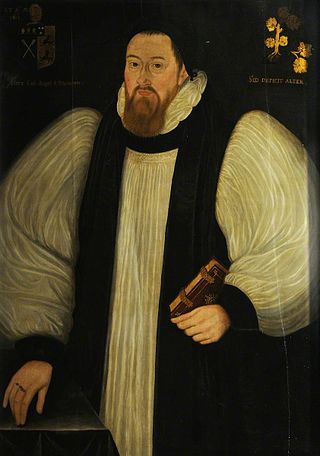Related Research Articles
1704 (MDCCIV) was a leap year starting on Tuesday of the Gregorian calendar and a leap year starting on Saturday of the Julian calendar, the 1704th year of the Common Era (CE) and Anno Domini (AD) designations, the 704th year of the 2nd millennium, the 4th year of the 18th century, and the 5th year of the 1700s decade. As of the start of 1704, the Gregorian calendar was 11 days ahead of the Julian calendar, which remained in localized use until 1923.
This article contains information about the literary events and publications of 1638.
The year 1700 in science and technology involved some significant events.
The year 1862 in science and technology involved some significant events, listed below.

Francis Godwin (1562–1633) was an English historian, science fiction author, divine, Bishop of Llandaff and of Hereford.
The year 1795 in science and technology involved some significant events.
The year 1719 in science and technology involved some significant events some of which are enumerated here.
This is a list of significant events that occurred in the year 1718 in science.
The year 1715 in science and technology involved some significant events.
The year 1714 in science and technology involved some significant events.
The year 1707 in science and technology involved some significant events.
The year 1704 in science and technology involved some significant events.
The year 1625 in science and technology involved some significant events.
The year 1626 in science and technology involved some significant events.
The year 1564 in science and technology included many events, some of which are listed here.

The Man in the Moone is a book by the English divine and Church of England bishop Francis Godwin (1562–1633), describing a "voyage of utopian discovery". Long considered to be one of his early works, it is now generally thought to have been written in the late 1620s. It was first published posthumously in 1638 under the pseudonym of Domingo Gonsales. The work is notable for its role in what was called the "new astronomy", the branch of astronomy influenced especially by Nicolaus Copernicus. Although Copernicus is the only astronomer mentioned by name, the book also draws on the theories of Johannes Kepler and William Gilbert. Godwin's astronomical theories were greatly influenced by Galileo Galilei's Sidereus Nuncius (1610), but unlike Galileo, Godwin proposes that the dark spots on the Moon are seas, one of many parallels with Kepler's Somnium sive opus posthumum de astronomia lunari of 1634.
The year 1581 in science and technology included the following notable events.
The year 1588 in science and technology, Armada year, included a number of events, some of which are listed here.
The year 1586 in science and technology included a number of events, some of which are listed here.
References
- ↑ Galileo Galilei (1974). Two New Sciences . Madison: University of Wisconsin Press. ISBN 0-299-06404-2.
- ↑ Poole, William (2010). "Kepler's Somnium and Francis Godwin's The Man in the Moone: Births of Science-Fiction 1593–1638". In Houston, Chloë (ed.). New Worlds Reflected: Travel and Utopia in the Early Modern Period. Farnham: Ashgate. pp. 57–70. ISBN 978-0-7546-6647-9.